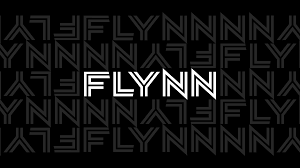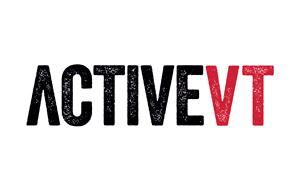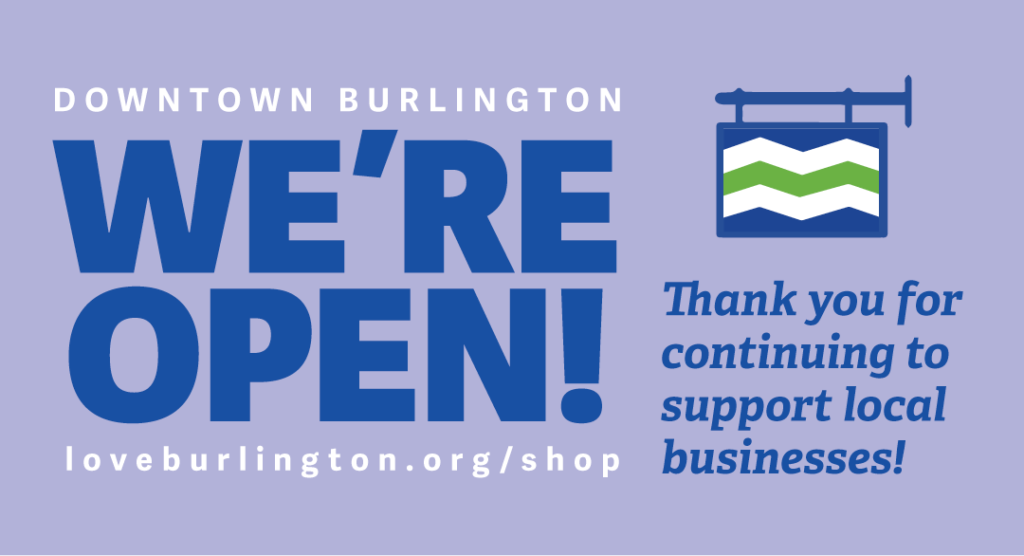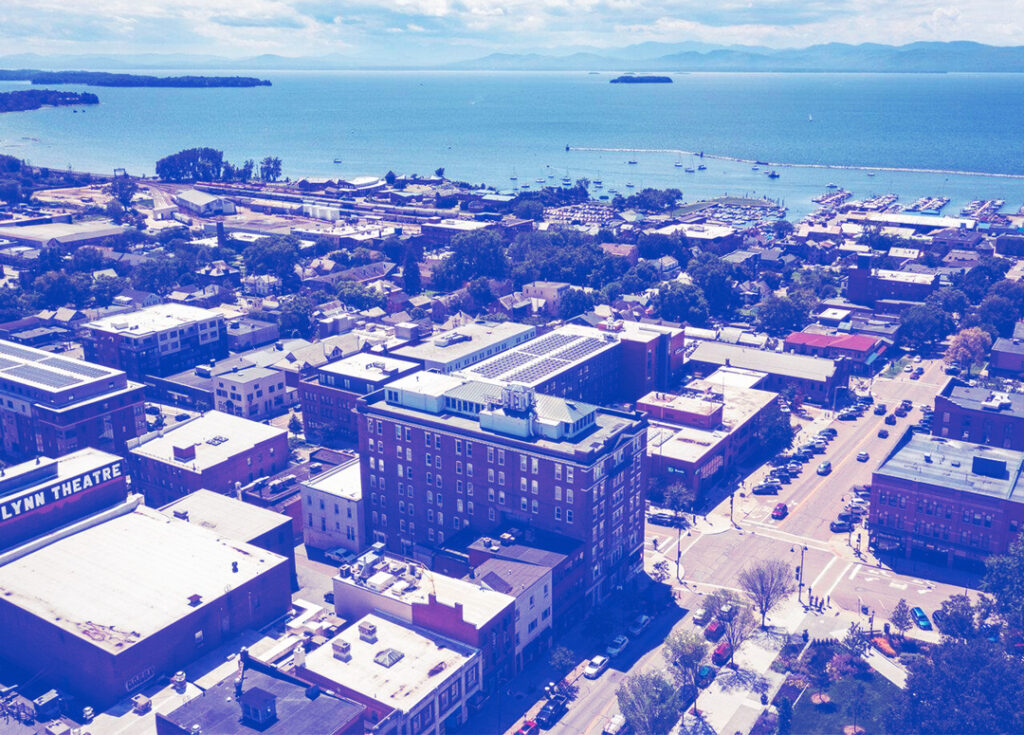The Main/S. Winooski intersection is open to North/South vehicle traffic.
The Main/Church intersection is fully closed to vehicle traffic.
The Main/St. Paul Street intersection is fully open to vehicle traffic.
The Main Street Project
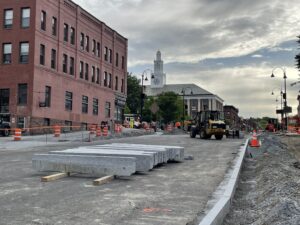
Update May 30, 2025
The Main/S. Winooski intersection is open to North/South/East traffic. The Main/Church intersection is fully closed to vehicle traffic but remains open to pedestrian and bicycle traffic. The Main/St. Paul intersection is fully open to vehicular traffic. The Main/Pine intersection remains closed to vehicular traffic but is fully open to pedestrian and bicycle traffic. Pedestrian traffic is being maintained throughout the project area. The parking lot at Main/S. Winooski is fully open and accessible from both S. Winooski and Main.
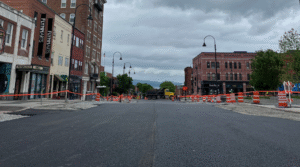
Update May 23, 2025
The Main/S. Winooski intersection is open to North/South traffic. The Main/Church intersection is fully open to pedestrian and bicycle traffic. The Main/St. Paul intersection will fully open to vehicular traffic for the holiday weekend. After the weekend, the intersection will be open to local traffic only. The Main/Pine intersection remains closed to vehicular traffic but is fully open to pedestrian and bicycle traffic. Pedestrian traffic is being maintained throughout the project area.
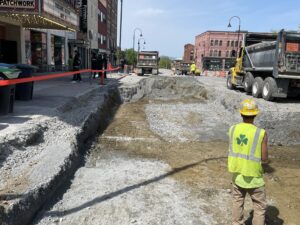
Update May 16, 2025
Main Street from the Main/Church intersection to S. Winooski Ave remains fully closed. The Main/Church intersection remains fully closed. Main/S. Winooski will be partially open for the weekend of 5/16-5/18. The Main/Pine and Main/St. Paul intersections will have partial closures. Pedestrian traffic is being maintained throughout the project area. The parking lot located at the corner of Main and S. Winooski will be closed next week for paving operations.

The Main Street concept is about balancing all of the uses of our public right of way
It will optimize the roadway by converting diagonal parking to parallel. These changes will allow for the introduction of wider sidewalks, appropriately sized tree belts to support tree health and storm water management, and a protected bike lane. Each intersection includes opportunities for outdoor seating, public art, views of the lake, or bike parking.
The Great Streets plan is for long-term sustainability and transforming our streets into dynamic public spaces, while ensuring that renovations and improvements can be responsibly maintained for decades to come.
The Main Street plan includes the following elements on each side of the street:
WIDER SIDEWALKS
(some of which may be used by adjacent businesses for outdoor seating or signage), with an 8-foot tree belt, a protected bike lane, a buffer between the bike lane and parked cars for parking meters and light poles, and parallel parking.
RE-BALANCE
A new balance of space use within the Main Street right-of-way. Today, 50-75% of the space between buildings is dedicated to driving and parking cars. In the concept plan, 60% of this space is used for non-vehicular purposes.
DIAGONAL TO PARALLEL
Conversion will maintain on-street parking spaces (and parking on every block), and allows Main Street to serve all of the needs of a vibrant public right-of-way.
MORE FLEXIBLE SPACES
Dedicated spaces that can be used for bike parking, outdoor café seating, public art or other uses, including a small deck with an information kiosk, seating that showcases breath-taking views of the lake, and lighting.
WATER COLLECTION
Stormwater improvements, rain gardens, and tree wells to infiltrate runoff where appropriate or detain/delay water into the collection system.
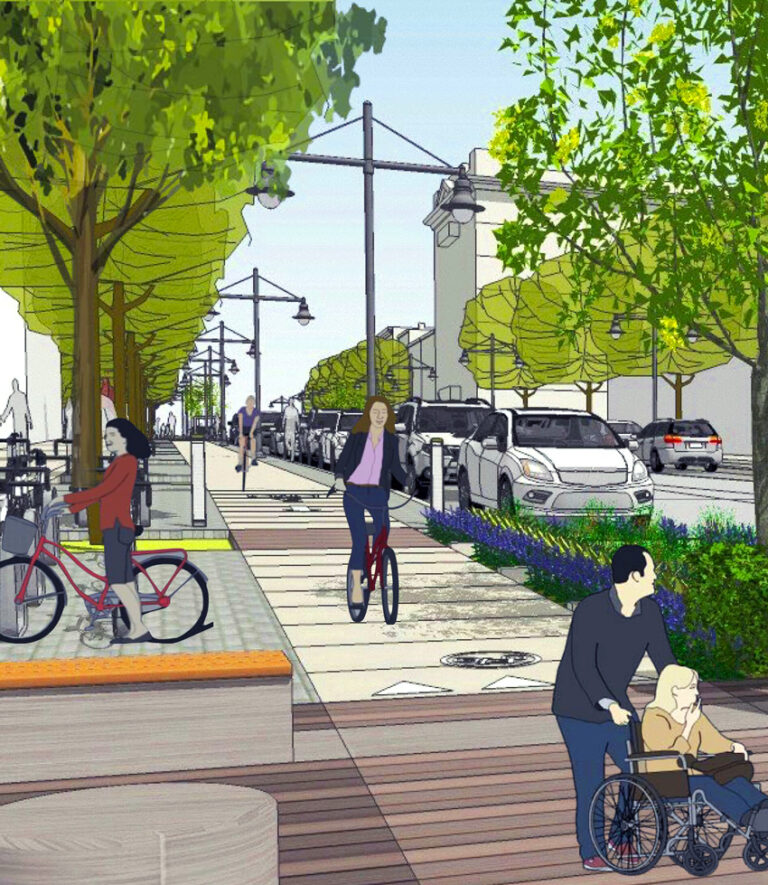
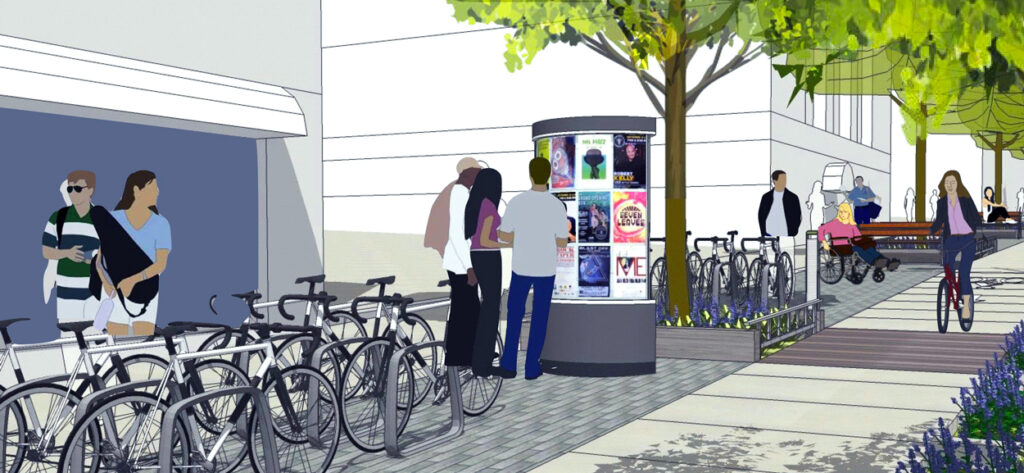
The Great Streets Design & Construction Standards
will guide the rebuilding of our streets according to four values articulated by the residents of Burlington through many planning initiatives:
- Walkable and bikeable – safe for all modes and all levels of accessibility
- Sustainable – both environmentally
sustainable, and long-lasting - Vibrant – to support the downtown’s diverse range of public and private activities
- Functional – works for all users, flexible, can be maintained, affordable
Learn more about the Great Streets Design & Construction Standards
Main Street – Intersection Study
As part of the City’s due diligence, the Design Consultant has evaluated whether the intersections within the project corridor should be controlled by traffic signals as they are currently, or if they should be converted to roundabouts.

